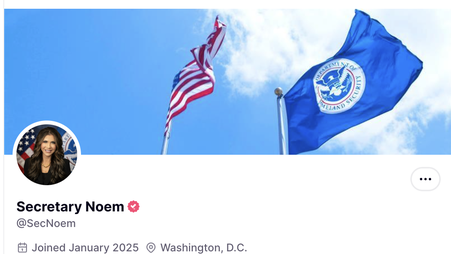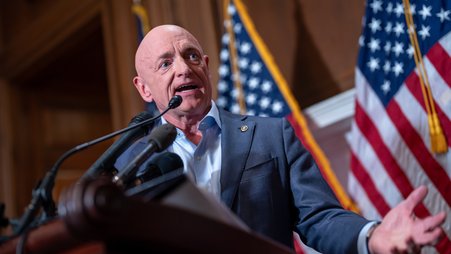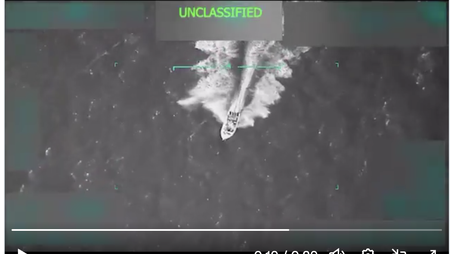
Journalists have long learned about breaking news by listening to police radio chatter, but a new trend of encrypting police radio channels threatens their access.
Just a few years ago, the New York City Police Department ran a failed anti-encryption campaign. Now, it’s actually found a form of encryption it does like. Unfortunately, it’s not the good kind.
Instead, the NYPD is the latest law enforcement agency to follow the troubling trend of encrypting police radio channels that were once open to the public. Police forces from California to Maine — and in many places in between, like Colorado, Illinois, Indiana, and Virginia — have recently switched to encrypted radio as they’ve updated their communications systems to use modern technology.
Yet reporters have used radio scanners for decades to learn about breaking news through police radio chatter. This real-time access lets newsrooms quickly send reporters and photographers to the scene of public emergencies, crimes, and police activity. Some freelance journalists have made careers out of tracking police activity through their radios and reporting the resulting news online.
The public benefits of access to police radio by journalists are well documented. As one New York news outlet described:
For instance, in 2017 when Sayfullo Saipov drove a rented U-Haul onto the West Side bike path, police scanner chatter provided vital information to avoid affected areas until the situation was under control.
Similarly, just this week, it was police scanner chatter that told the media and the community about the crane collapse in Hell's Kitchen, allowing them to stay informed and take necessary precautions.
Despite these benefits and public assurances that encryption wasn’t coming until late 2024, six precincts in Brooklyn quietly made the change to encrypted radio last month. Maybe the NYPD hoped no one would notice this secret switch. Or maybe it just didn’t care enough to inform the public about the change.
But the public and the press did notice, and they demanded an explanation. Unsurprisingly, the NYPD raised vague safety concerns as its main justification for the change. It claimed that it had “a lot of examples that we can share with the media” of radios being used against police. But when pressed by reporters, it offered just a single incident from 2016, when a man “took over a department radio frequency to make multiple verbal threats” against an officer.
This single example doesn’t come close to justifying wholesale encryption of police radio communications. If the NYPD’s true concern is about unauthorized transmissions, it could encrypt the "input" side to allow only authorized equipment to transmit, while automatically decrypting the “output” side to continue timely listener access.
Meanwhile, New York City Mayor Eric Adams invoked the idea of “bad guys” listening in on the police radio so they “can see when we’re responding to a crime.” Of course, he’s offered no examples of a time when this has actually happened in New York City. (There have been isolated reports of criminal suspects listening to police radio — like this officer safety bulletin from Maryland warning of “several” recent incidents but actually recounting only one.)
Vague notions straight out of Hollywood about how to stop bad guys aren’t enough to justify a total ban on public access to police radio. There’s simply no evidence that this supposed problem is so pervasive or widespread that we need to shut the public out. In contrast, the public good that access does is evident in news reports on a daily basis.
So what’s the real reason behind this change at the NYPD and other police forces? It could be that news reporting on crime puts pressure on government officials responsible for combating it. Making it harder for journalists to report about crime makes it easier for governments to sweep it — and information about what police are up to — under the rug.
In the face of public outcry over the underhanded way it began to encrypt its radio channels, the NYPD has promised to explore “whether certain media access can be facilitated,” including by examining methods used in other jurisdictions. Of course, it also promised not to encrypt radio until next year, so perhaps we should take its word on media access with a grain of salt.
But there’s no panacea in ideas to allow some access that other places have tried. Chicago, for example, allows public access but with a 30-minute delay. That makes the scanners almost useless for breaking news coverage, since the news might be over by the time reporters learn about it and arrive on the scene.
In Las Vegas, police gave “media outlets” continued access after encrypting their radio communications. But this kind of exception excludes watchdog groups and the public. It may exclude freelance journalists too, if only accredited news outlets are considered “media outlets.” It could also let police play favorites, granting access to outlets that cover police favorably and denying access to their critics.
Rather than exploring options to make its terrible decision slightly less bad, the NYPD should leave its radio channels unencrypted. They’ve been that way for decades without serious incident, and outdated infrastructure can be upgraded without paying extra to radio system manufacturers for the privilege of encryption. There’s no justifiable reason for the NYPD and other police forces’ decision to encrypt radio communications. It’s time to buck this anti-transparency trend.




